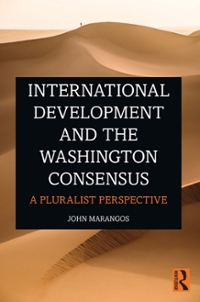Answer all the questions below
A schoolteacher is investigating the claim that class size does not affect GCSE results. His observations of nine GCSE classes are as follows: Class X1 X2 X3 X4 Y1 Y2 Y3 Y4 Y5 Students in class (c ) 35 32 27 21 34 30 28 24 7 Average GCSE point score for class ( p ) 5.9 4.1 2.4 1.7 6.3 5.3 3.5 2.6 1.6 [c=238 [c' =6,884 [p=33.4 [p2 =149.62 Ecp=983 (i) Determine the fitted regression line for p on c. [3] (ii) Calculate the correlation coefficient and carry out a test to establish whether or not the data agrees with the claim that class size does not affect GCSE results. [6] (iii) Following his investigation, the teacher concludes, "bigger class sizes improve GCSE results". Comment on this statement. [2] (iv) Class X5 was not included in the results above and contains 15 students. Calculate an estimate of the average GCSE point score for this individual class and specify the standard error for this estimate assuming the full normal model. [41Example 15.10.1. The following table refers to deaths among patients in certain long-term beta- blocker trials. Treatment Control Trial Group Group O - E V S 12/V 1. 3/39 3/39 0.0000 1.4026 0.0000 0.6585 2. 7/114 14/116 -3.4087 4.7911 -0.6785 0.1898 3. 5/69 11/93 -1.8148 3.5477 -0.4858 0.2543 4. 102/1533 127/1520 -12.9876 52.9722 -0.2359 0.0175 28/355 27/365 0.8819 12.7149 0.0667 0.0727 4/59 6/52 -1.3153 2.2863 -0.5490 0.3983 98/945 152/939 -27.3981 54.2347 -0.4709 0.0160 60/632 48/471 -1.8821 23.8590 -0.0750 0.0378 9. 25/278 37/282 -5.7786 13.8079 -0.3949 0.0645 10. 138/1916 188/1921 -24.7876 74.5949 -0.3180 0.0123 11. 64/873 52/83 -5.5522 25.6484 -0.2077 0.0359 12. 9/290 16/293 -3.4357 5.9921 -0.5610 0.1598 13. 57/858 45/883 6.7323 24.0149 0.2720 0.0392 14. 25/154 31/147 -3.6512 11.4271 -0.2888 0.0715 Source: Yusuf, S., et al. Prog. Cardiovascular Diseases 27 (1985), 335-371. Table 15.10.1: Deaths in long-term beta-blocker trials. Note. We ignore withdrawals, although in reality there were some. Find an approximate 95% confidence interval for the hazard ratio.The following table refers to the survival times (in years) of the patients in a certain clinical trial. An asterisk indicates that the observation was censored. It is assumed that censoring was random, and that patients were randomly assigned to the treatment or control arms. Control arm 3,6*,7,8*,8*,8*,9,11,13 Treatment arm 4*,5,8*,8*,8*,8*,10,12*,14* Assuming a proportional hazards model, find the estimate of the log-hazard ratio / using the Cox proportional hazards method









